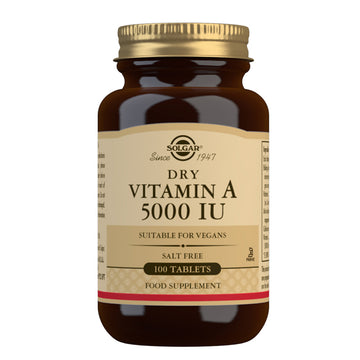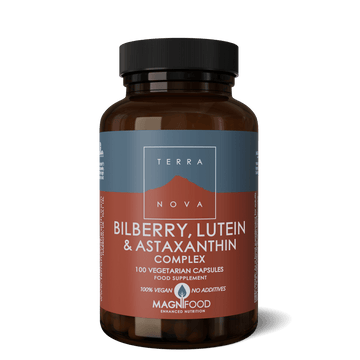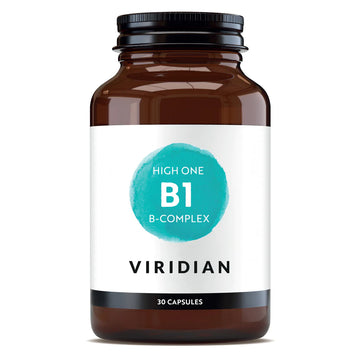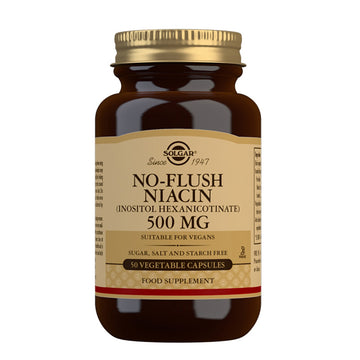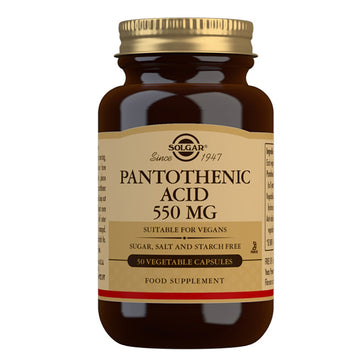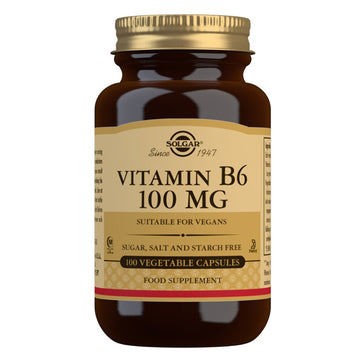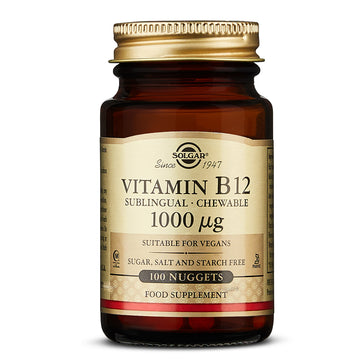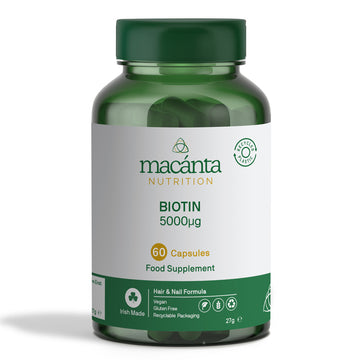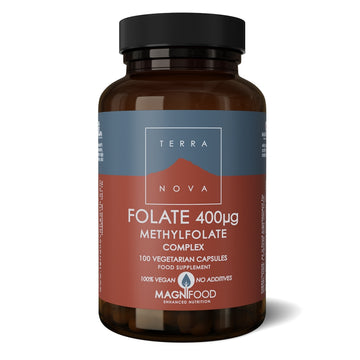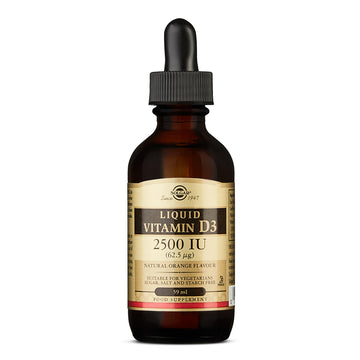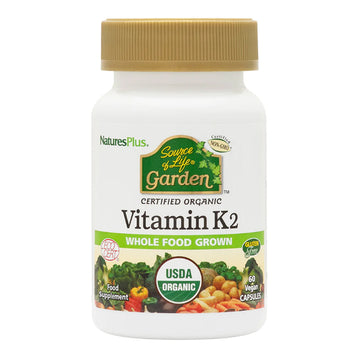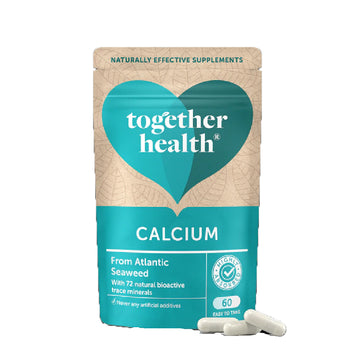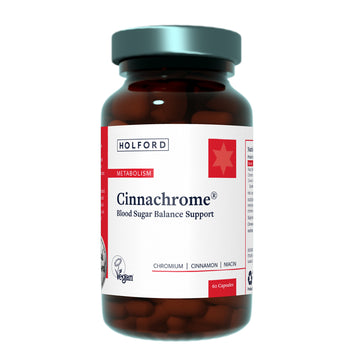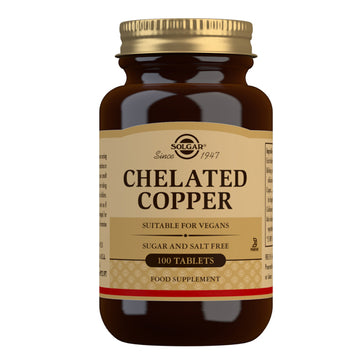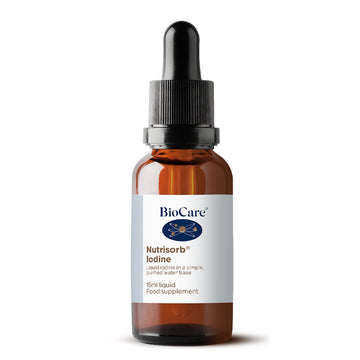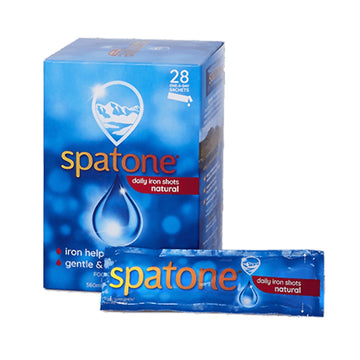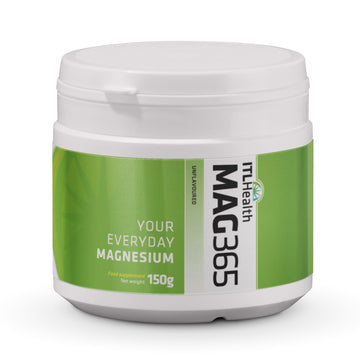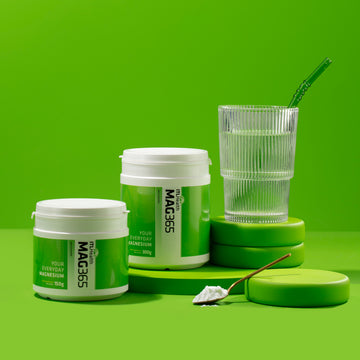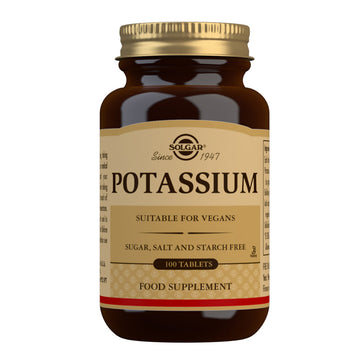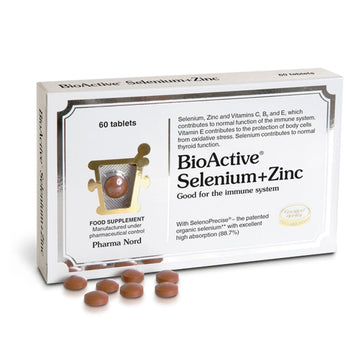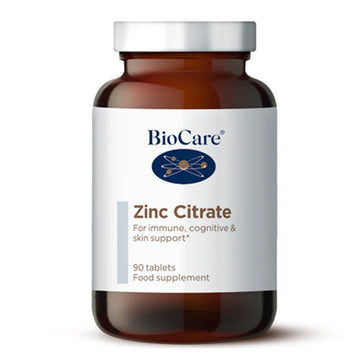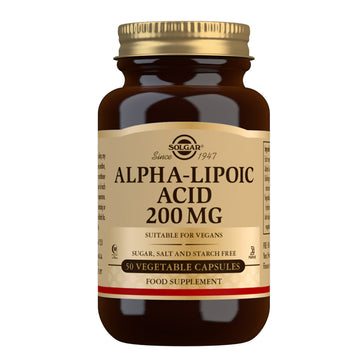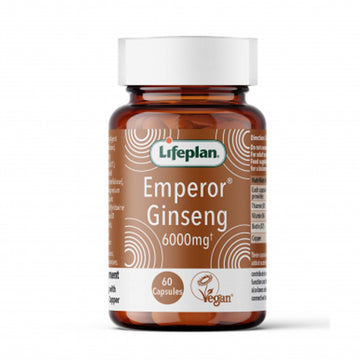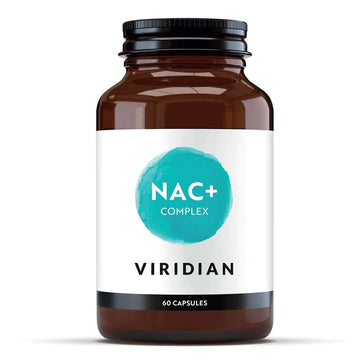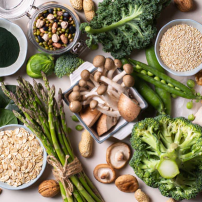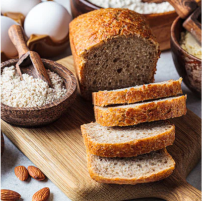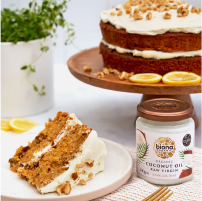Want to get to grips with the vitamins and minerals our bodies need to function and thrive? Our A-Z of Vitamins and Minerals is a concise, convenient guide that will talk you through everything from iron to iodine. We've got the lowdown on all the essential vitamins and minerals you'll find in the foods we eat, where to source them and what they're needed for. Let's dive in!
Evergreen's A-Z of Vitamins and Minerals: Vitamins
Vitamin A (Retinol)
A fat soluble vitamin, vitamin A maintains eye health (particularly related to night sight), supports growth of cells within mucous membranes, and is involved in protein synthesis and skincare.
Where to get it:
- offal
- dairy produce
- oily fish
- fish liver
Companion nutrients: Zinc; required to release vitamin A stored in the liver, vitamin E; the antioxidant of vitamin A.
Beta Carotene
Beta Carotene is converted to vitamin A in the body if needed; if not needed it remains as beta carotene and acts as a scavenger antioxidant.
Where to get it:
- carrots
- spinach
- apricots
- tangerines
- tomatoes
Companion nutrients: vitamin A, C, E and zinc work with beta carotene strengthening antioxidant defences.
Vitamin B1 (Thiamin)
Vitamin B1 is water soluble and is necessary for carbohydrate metabolism, converting food into energy. It also aids production of hydrochloric acid in the stomach.
Where to get it:
- unpolished brown rice
- yeast extract
- fatty fish
- wholemeal bread
Companion nutrients: vitamin C works well with vitamin B1.
Vitamin B2 (Riboflavin)
B2 is a water soluble vitamin needed for body cell respiration and tissue repair (particularly that of mucous membranes). In its role as a co-enzyme, it works alongside various enzymes found in the liver, and is needed for the oxidation of energy producing components such as amino acids and sugars.
Where to get it:
- milk
- dairy
- yeast extract
- brewer’s yeast
Companion nutrients: *Cofactors flavin adenine dinucleotide (FAD) and flavin mononucleotide (FMN). These contribute to several cellular reactions, including the metabolism of several other vitamins.
*Cofactors are molecules that help an enzyme or protein to function properly.
Vitamin B3 (Niacin)
Vitamin B3 is a water soluble energy vitamin that helps to convert food to energy. In the form nicotinic acid; it maintains cardiac wellbeing and circulation. In the form of nicotinamide; it works specifically on energy production, and the breakdown of fats, proteins and carbohydrates.
Where to get it:
- yeast extract
- brewer’s yeast
- liver
- dairy
- oat flakes
Companion nutrients: B1, B6, the respiratory cofactors nicotinamide adenine dinucleotide (NAD) and nicotinamide adenine dinucleotide phosphate (NADP).
Vitamin B5 (Pantothenic acid)
Water soluble Vitamin B5, is connected to tissue and fat metabolism, energy production, anti-stress hormone production, antibody production - therefore it is important for immune health.
Where to get it:
- brewer’s yeast
- liver
- meat
- poultry
- fish
- eggs
Companion nutrients: co-enzyme A, linked to the utilisation of B2 and works with B6 to produce anti-stress hormones.
Vitamin B6 (Pyridoxine)
B6 is a water soluble vitamin and is involved in more than 60 reactions in the body, many relating to protein metabolism. It is also a component in metabolising serotonin, histamine; and is required to convert L-methionine to cystathionine and prevent it from becoming homocysteine.
Where to get it:
- Pork
- white fish
- liver
- eggs
- dairy
- potatoes
Companion nutrients: works with zinc in serotonin production; with magnesium in breaking down calcium oxalate; with nicotinic acid in the conversion of L-tryptophan; with B1 and B2 as neurotransmitters in nerve and impulse reactions.
Vitamin B12 (Cobalamin)
This vitamin is slightly different from other water soluble vitamin in that very small amounts are stored in the body. B12 helps maintain a healthy nervous system (regulates the fatty acids integral to the myelin sheath), and is involved in the formation of healthy new red blood cells.
Where to get it:
- liver
- kidney
- fatty fish
- eggs
Companion nutrients: it works closely with folic acid. Calcium is used to absorb B12 from the bowel. Intrinsic factor must be present to be absorbed from the gastro-intestinal tract.
Biotin
Water soluble and one of the B-vitamins (vitamin H, B7 or B8 depending on country), it is a component of the enzymes which metabolise fats and carbohydrates. It is often taken to promote skin, hair and nail health.
Where to get it:
- liver
- eggs (yolk)
- kidney
- almonds
Companion nutrients: it operates as a cofactor for several carboxylases.
Folic Acid
Folic Acid is a water soluble vitamin used to metabolise nucleic acids, and is vitally important in pregnancy.
Where to get it:
- yeast extract
- brewer’s yeast
- spinach
- oysters
Companion nutrients: vitamin C is required to convert into the active form in the body; linked with B12 regarding healthy red blood cell production.
Vitamin C
The only water soluble vitamin that is not in the B-complex, vitamin C is involved in at least 300 biological processes. It is used in collagen production, control of histamines, correct functioning of adrenals; has antiviral, antibacterial and antioxidant properties.
Where to get it:
- citrus fruits
- plums
- tomatoes
- strawberries
- broccoli
Companion nutrients: bioflavonoids always occur alongside vitamin C in its food sources, and vitamin C is linked with vitamin A and E because of its protective effects on them. It also facilitates the absorption of iron.
Vitamin D
Vitamin D is a fat soluble vitamin that operates more akin to a hormone, whose main role is in calcium metabolism and bone health. It is also related to immune wellbeing.
Where to get it:
- the UV rays of the sun react with oils under the skin to create vitamin D
- oil from white-fleshed fish
- fatty fish
Companion nutrients: it is needed to promote the absorption of calcium and phosphate.
Vitamin E
A powerful antioxidant which is fat soluble, vitamin E is known as a vasodilator, skin repairer and protector of cell membranes. Can increase efficiency of oxygen used by muscle and is connected with fertility, also neutralises free radicals in the body.
Where to get it:
- eggs
- butter
- cereals
- oily fish
Companion nutrients: protector of vitamin A, C, polyunsaturated fatty acids and the amino acids cysteine, cystine, methionine, works synergistically with selenium with the two appearing inextricably linked.
Vitamin K
Vitamin K is a fat soluble vitamin and has one main function: producing blood clotting factors. It is also linked with the synthesis of proteins produced in the liver, and has a hand in bone health.
Where to get it:
- spinach
- broccoli
- lettuce
- some liver
- lean meat
Companion nutrients: requires combination with calcium for the activation of some of the clotting factors.
Evergreen's A-Z of Vitamins and Minerals: Minerals
Calcium
The main elemental constituent of bones and teeth, calcium is needed for bone health, and is involved in nerve-impulse transmission and healthy blood clotting.
Where to get it:
- cheese
- yoghurt
- nuts
- fish with the bones
- eggs
Companion nutrients: it appears to have an inverse relationship with both magnesium and potassium, works with vitamin D in bone health, calcium ions are needed for correct B12 absorption.
Chromium
Chromium is a trace mineral connected with the complex known as GTF (glucose tolerance factor); therefore it is thought to be of use in balancing blood sugars.
Where to get it:
- brewer’s yeast
- liver
- molasses
- wheat germ
Companion nutrients: B3 is thought to be related to the metabolism of chromium because it too is related to GTF.
Copper
This is a metallic trace mineral which is a cofactor for many enzymes, such as those which facilitate the formation of melanin, collagen. Copper is used for iron absorption, healthy bone and blood formation, nerve impulses in the brain and the functioning of cytochromes.
Where to get it:
- liver
- seafood
- nuts
- seeds
Companion nutrients: vitamin C can improve absorption, high levels of zinc or manganese can reduce copper levels
Iodine
This trace element is tightly connected to and plays a vital role in thyroid function; Iodine forms part of the hormones thyroxine and triiodothyronine.
Where to get it:
- sea vegetables
- cod
- herring
- some dairy produce
Companion nutrients: it is thought to interact with selenium.
Iron
Iron is an essential trace mineral which is a constituent of haemoglobin, myoglobin, and several enzymes notably cytochromes. It acts as a carrier of oxygen to the muscles, and takes part in the transfer, is involved in immune health and plays a part in the enzyme which destroys the toxic hydrogen peroxide produced by the body during metabolic processes.
Where to get it:
- meat
- liver
- poultry
- fish (these are haem iron and easier absorbed)
- vegetables (non-haem iron)
Companion nutrients: vitamin C can enhance absorption, traces of copper are also needed. Excessive zinc can be detrimental, non-haem iron can have absorption affected by tannins in tea and other beverages as well as the presence of phytic acid and phosphate.
Magnesium
A metallic macro element, magnesium is connected to nerve impulse transmission, bone health, and muscle relaxation. It is a cofactor in protein metabolism, a cofactor in hormones and enzyme systems, and activator and cofactor of B1 and B6 in their metabolic functions.
Where to get it:
- soya beans
- nuts
- brown rice
- brewer’s yeast
Companion nutrients: it is needed to utilise B1, B6, complements calcium and may enhance the absorption and retaining of it.
Manganese
A trace mineral which 2 enzymes rely upon specifically for their activity and several others are non-specifically activated by. The huge range of roles manganese is involved in include developmental growth, a healthy nervous system, thyroid function, utilisation of many vitamins such as C, E, B.
Where to get it:
- wholegrains
- tea
- fruit
- vegetables
Companion nutrients: iron is thought to perform better in its presence, vitamin C, E, B utilisation is connected.
Potassium
Potassium is an alkali metal and is one of the main electrolytes present in the body. It is involved in muscle contraction, nerve impulse transmission, energy release during metabolism, and is vital for heart health. It performs alongside sodium to regulate the water balance and acid-alkaline balance in blood and tissue.
Where to get it:
- dairy
- raisins
- instant coffee
- avocados
Companion nutrients: as mentioned sodium, and magnesium may be connected to maintaining potassium levels in the cell.
Selenium
This trace mineral is an excellent antioxidant and works to neutralise the effects of free radicals. Alongside vitamin C, E, selenium is connected to the enzyme glutathione peroxidase which facilitates the breakdown of hydro peroxides.
Where to get it:
- seafood
- kidney
- liver
- content in grain, seeds and nuts depends on soil quality
Companion nutrients: vitamin C, and vitamin E with which it is synergistic.
Zinc
Zinc is a trace mineral which is a cofactor in over 80 enzyme systems. It is involved in growth process and skeletal development, cell division, is connected to the release of insulin by the pancreas, and is related to maintaining a healthy immune system and healthy liver.
Where to get it:
- meat
- liver
- eggs
- oysters
Companion nutrients: it is needed to release vitamin A from liver stores. Excess of zinc or iron can negate the other. High zinc can also lower copper absorption, and high cadmium can impair zinc absorption.
Evergreen's A-Z of Vitamins and Minerals: Specialty Supplements
Alpha Lipoic Acid
Alpha Lipoic Acid is a vitamin-like substance which plays a role in the production of ATP (adenosine triphosphate, the molecule that carries energy in the cell) and as a potent antioxidant protecting against both water and fat soluble free radicals. It may help maintain glutathione levels, and could discourage skin glycation.
Coenzyme Q10
CoQ10 is a substance found in each cell and an essential component of the mitochondria, related to production of ATP (adenosine triphosphate). It is needed in the conversion of carbohydrates and fats into energy. It has heart health properties, and is a lipid protecting antioxidant.
Curcumin
This is the principle curcuminoid found in the herb turmeric. A potent antioxidant, curcumin is thought to also enhance the actions of other antioxidants, and has the properties of an anti-inflammatory compound.
DHA (docosahexaenoic acid)
DHA is an omega-3 fatty acid strongly connected to eye health and mental function, and in small part to immune and cardio function. It is particularly important during foetal development and during infancy to assist normal visual and neurological development.
EPA (eicosapentaenoic acid)
This omega-3 fatty acid, works in combination with DHA in connection to cardiovascular function. EPA is used to signal molecules called eicosanoids which operate in terms of anti-inflammatory and numerous physiological roles.
Ginseng
There is many variants of ginseng such as Korean; thought to increase stamina, and beat fatigue. It contains a group of terpenoid compounds called ginsenosides. Another ginseng is Siberian; not actually a true ginseng but seen as the balance of not stimulating and not sedating. It contains the compound eleutherosides, though to limit levels of stress hormones released in the stress response.
MSM
MSM is an organic sulphur compound, an element in more than 150 compounds in the body and in every cell. It is specifically present in hair, nails, connective tissue - joints, and skin as an important protein structural component.
NAC (N-acetyl-L-cysteine or N-acetylcysteine)
NAC - the acetylated precursor of both L-cysteine and reduced glutathione, has properties of an antioxidant and free radical scavenger. It can promote liver detoxification and is being studied in regards to its effect on glutamate which is considered connected to craving reduction.
Shop Vitamins & Supplements on Evergreen.ie!
Please note, this blog is for informational purposes only and should not replace medical advice.
It’s always best to consult your doctor before taking any new supplements, treatments or remedies if you are pregnant, breastfeeding or on medication.
Do you want to know even more about how you can support your health? Then read our blog 'Essential Vitamins Your Body Needs (And How to Get Them)'
Checked and updated: 15 August 2021
Checked and update : 7th September 2023



